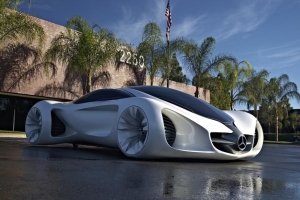Think about this and what you might do. Imagine what’s considered to be the newest, coolest, most-value-adding differentiator in your category today will become a price-of-entry, table-stakes, ho-hum feature/value in the next two years. Faster, if the velocity of consumer expectations increases, which it does every year. What are you going to do?
You really ought to be planning for that. According to this year’s Customer Loyalty Engagement Index (CLEI), which predictively measures how engaged consumers are with their brands and how likely they are to behave positively toward your brand in the actual marketplace – where “engagement” is defined by how well brands meet their customers’ unconstrained-by-reality expectations – those expectations are up, over 64 categories, having accelerated a whopping 16% over last year.
If you’re sitting there thinking, “Well, that’s not too bad. Everyone knows our brand, we have distribution, we have all that social media, and people tweet about us, so we don’t have to worry,” that position is wrong in so many ways, it’s hard to explain without charts! Brands, on average, have only managed to keep up with those increased expectations by 7%, so the “gap” between what consumers really expect and what brands actually deliver is, aptly enough, large enough to drive a large SUV through.
Who ought to be worrying now? Here’s this year’s CLEI top-5 categories with the fastest growing consumer expectations. Numbers in parentheses indicate growth over last year.
- Automotive (32%)
- Online Streaming Video (30%)
- Mutual Funds (28%)
- Luxury Cosmetics (25%)
- Fast-Casual Restaurants (22%)
What should you do? Even if your brand isn’t in one of the top-5 fastest expectation-growth categories, it’s something you’ll need to address sooner or later. All categories are growing, so first, you need to find a way to accurately measure your customers’ expectations, because expectations are category-specific. What happens in the smartphone category, doesn’t happen the same way for headphones or fast-food, no matter how much social media folks wish it so.
Second, you need to identify the category-specific values – which are, these days, more likely emotional than rational – that make large enough contributions to consumer engagement to meaningfully help close the gap between what your consumers expect and what your brand is felt to deliver. You can’t just guess at it. Well, you can, but it’s probably not going to work out they way you hoped.
Take the Automotive category. No, that enormous increase in expectations doesn’t have anything to do with the flying cars they promised us back in the 1950’s! The values driving those category’s expectations today have to do with Personal Connectivity and Connected-Vehicle Technology. BTW, Brand Keys identified that value 4 years ago, which is why it’s nice to have predictive metrics, particularly when it comes to expectations.
The other fastest-growing expectation categories? Online Streaming Video’s main area of expectation-delivery has to do with Original Content, Not Limited By Traditional TV/Cable Boundaries. Mutual Fund values have to do with What I Can Do When I Retire. It turns out values for Luxury Cosmetics has less about “looks” and more about Nurturing, and Fast-Casual Restaurants has absolutely nothing to do with dollar-menus and everything to do with Customization of Truly Healthy Food, values, which we’re willing to bet weren’t the first one’s that leapt to your mind! Well, those and kelp.
You need to address the really important and differentiating values, and you need to do it before they turn into category-value commodities. Brands that are able to better meet customer expectations and are able to address them with emotional values that are meaningful and differentiating will always see more, more highly-engaged customers behaving better toward them in the marketplace. Do it before the competition and you’ll have a real in-market advantage, which is the bottom line benefit about meeting – sometimes even exceeding – growing expectations.
But first, you actually have to be able to accurately identify them. Which, when it comes to research and strategic planning, should be your ultimate bottom line.
Find out more about what makes customer loyalty happen and how Brand Keys metrics is able to predict future consumer behavior: brandkeys.com. Visit our YouTube channel to learn more about Brand Keys methodology, applications and case studies.
Share this:
